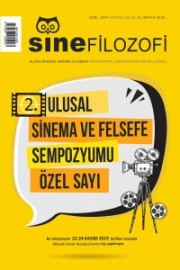Sanal Gerçeklik Anlatısının İzini Sürmek: Trinity VR ve Selyatağı VR Örnekleri
Tracing Virtual Reality Narrative: Trinity VR and Selyatağı VR Examples
Author(s): Hakan Erkılıç, Servet Can DönmezSubject(s): Media studies, Film / Cinema / Cinematography, ICT Information and Communications Technologies
Published by: Serdar Öztürk
Keywords: virtual reality; 360 degree film; digital cinema; narrative; interactivity;
Summary/Abstract: Virtual reality is an interactive computer technology that gives users sensory feedback by tracking their positions and actions 360 degrees. Augmented reality is a system in which real images and digitally generated images (CGI) are superimposed. The fact that virtual reality technology, which was cumbersome and expensive at the time it first appeared, became smaller with the development of digital cinema and became cheap for the access of everyday users, and the areas that started to benefit more from the opportunities of this technology increased. Although virtual reality technology, which is basically an interactive narrative tool, uses the digital game sector as the most effective in this context, it will not be wrong to say that cinema narrative has always started to benefit more from the technical possibilities of virtual reality technology as a result of imaginable interaction and alternative narrative searches. The relation of time and space to reality, the quality of cinema time and space and interactive, and the first two of these three main points of departure have a big share in the way that the narrative of the cinema narrates and reaches its purpose. In the point of interactivity, it can be claimed that virtual reality stands at a point beyond all narratives and arts, even cinema. In this context, the answers to the following questions are sought: The intersection and separation of virtual reality technology and cinema? Similarities and differences? Narrative structures and techniques? Perceptions of reality they create? As the main reason why similar questions are becoming more and more common nowadays, the digital transformation experienced by the rapidly adapting cinema technology can be shown. From this point of view, in this study, Trinity VR (Boivin, 2018), which is shown as an example of mainstream and large production productions with emphasis on the similarities and differences of virtual reality technology and cinema, and Selyatağı VR (Tortum, 2018) as an example. by style analyzing virtual reality films, answers will be sought on the structure of cinema narrative changing with virtual reality technology.
Journal: SineFilozofi
- Issue Year: 5/2020
- Issue No: Sp. Iss
- Page Range: 318-344
- Page Count: 27
- Language: Turkish

